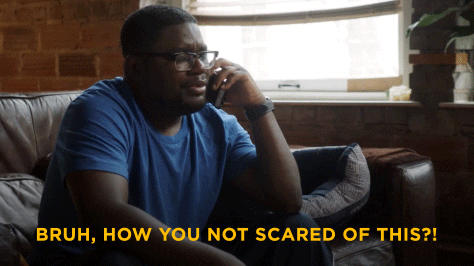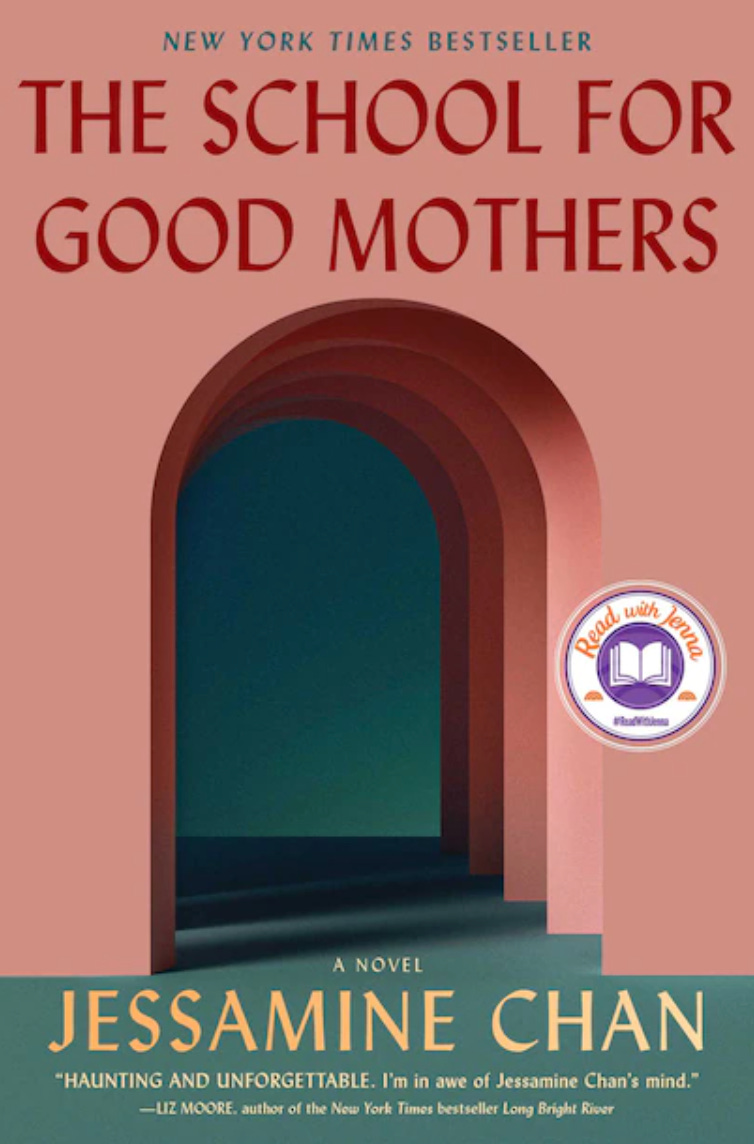Today I’m glued to the breaking news from Ottawa. Cops shattering truck windows. The slow, deliberate clearing of trucks that have been set up in downtown Ottawa for weeks. Children, one so small the family needed a stroller, brought to the front lines between protestors and police.
It’s a day of images and news stories. But when the “freedom convoy” is all cleared out, it won’t be over. The ideas that drove convoy protestors to Ottawa, and convoy protests across the country, won’t magically evaporate when their trucks go home.
I was at the convoy in Ottawa last week. Let me tell you what it was like.
It was before the Ottawa police chief resigned, before the Emergencies Act, before convoy organizers were arrested.
We went on Day 11 of the convoy in Ottawa, which I’d been watching since Day 1, and it was definitely the last place I expected to be.
My work partner Garvia and I are in the very early stages of making a podcast about democracy in Canada. Including a “freedom convoy” in our podcast was not part of the plan. However, we’re marinating in thoughts about democracy all the time these days. We recognized this convoy as a moment our country will have to live with for a long time.

Garvia was the one who said we should go.
“I’m so mad because I know you’re right,” I laughed. And a few hours later, we were on a train.
We were not about to send just one of us there to record audio. We had to go together and stick together the whole time. We told ourselves safety comes first and getting tape was a distant second.
The plan was to stop people on the street and speak with people who live and work in Ottawa, not people who had descended to demonstrate.
We didn’t know what to expect. We had been reading about the violent, white supremacist ideologies of some convoy leaders. No one knew what weapons were in truck cabs (some protestors were claiming to have them). We read about workers in masks assaulted on the street. Journalists were being harassed, even spat on.
Why were we going again?
We arrived late at night to a hotel surrounded by trucks (thankfully, we arrived the day after the injunction silenced the constant blaring). We looked around.
“Garvia, did you book us into a protestors’ hotel?”
“Yeah, I think I did.” We realized that in downtown Ottawa, perhaps there was no other kind.
No one wore a mask in the hotel except us and the staff. I began to think of non-confrontational ways to avoid getting in an elevator with someone already in it.
The next morning, when we hit the street, I was dressed in a way that I thought would be as inconspicuous as possible. It didn’t matter. We definitely stood out.
Everybody was immediately recognizable from what they wore. Cops in neon vests. Convoy draped in flags or wearing red and white. Government workers in lanyards, speed-walking from building to building, trying to spend as little time on the street as possible. It was quiet but cagey. I felt watched. A Korean woman and a Black woman in long puffer coats with a microphone. It was obvious that we were journalists—and convoy protestors have made their feelings about the media well-known, at all protest locations. For example, in Toronto:

The streets of downtown Ottawa resembled a crude Canada Day barbecue gone wrong. And in some areas, such as on Kent Street, there were outdoor kitchens with flatbed trucks piled high with firewood. On Kent, the diesel exhaust was so extreme I had to step away onto a side street to breathe more freely.
An emergency fire dispatcher we interviewed said he was teaching the signs of carbon monoxide poisoning to everyone he met, convoy protestors included, because he wanted people to recognize them (research shows extremely high levels of exhaust pollution).1
In this mix, children of convoy protestors were running around in snowsuits holding up signs that said, “Freedom.”
I’ve never seen so many flags. A good chunk of them were upside-down and spray-painted and everything was interspersed with “Fuck Trudeau” signs. The mood was triumphant. Protestors high-fived and waved to each other.
Convoy people greeted us, too. “Good morning!” Big smile. “Hello!” Holding the door open. It was chivalrous and creepy for a city girl who knows strangers don’t normally behave this way. It was like they were welcoming us to their turf. They were owning the streets and we all knew it. Very Get Out vibes.
We spoke to as many people on the streets as we could.
One young white man told us he votes Liberal but had to “hand it to the truckers” for staging a successful “protest.”
His choice of words was so puzzling.
I thought of him as I listened to The Daily’s coverage of the convoy from the New York Times, in which the Canada bureau chief says of the trucks at the convoy: “These people moved in with these brilliant protest machines!”
I hated the choice of language (and judging from the reaction on Twitter, so did everyone else).2
When people use gushing language to describe what’s happening, I just think, It mustn’t feel very serious to them. There are no personal stakes. How nice it must be to easily blend in with the convoy crowd if they want to.
I look more like women who are being targeted with violence. It’s not just the horrifying news stories of Asian-American women targeted and murdered;3 it’s the regular, everyday, yelling-racist-slurs-on-the-streetcar kind of racial violence.
Keep in mind, especially as protestors liken their experience of vaccine mandates to the persecution of Jews in Nazi Germany, that anti-Semitism is the most-reported hate crime4. You may have seen this viral TikTok before. I’m inclined to believe her conclusion. (I’ve linked to this TikTok in Further Reading, below.)
While I’m making recommendations, instead of listening to the garbage that flowed from The Daily episode on the convoy, try the episode of Today, Explained called “What the truck is happening in Canada?” It features Canadian journalist Justin Ling, whose investigative reporting I have appreciated so much throughout, regarding the convoy, its origins and its extremist organizers. I’m linking below.
In fact, there’s been a lot of great coverage of this news, which is why I didn’t post on social media or even write about our trip until now. I didn’t personally go to the convoy to report on it. The project Garvia and I are working on is a bigger-picture lens than what’s happening today in Ottawa.
But I was there and I can tell you this: People at the convoy don’t want democracy. They want no rules. And that’s definitely not the same thing.
As we left Ottawa, the image I had was of a wolf in sheep’s clothing. And while I don’t want to be alarmist, I also don’t have the luxury of being naive.
I don’t like white supremacists who use twisted language and logic because sure, they scare me. But at least these individuals are easy to spot, through their own social media posts and their open, complete disregard for other people— including their own children (seeing children with signs was truly one of the saddest parts for me).
But the people I find scariest are white people for whom this is so casual. White people who claim they don’t side with the convoy but use glowing adjectives to describe it.
I am scared of people who won’t condemn what’s happening, the people who feel they have no skin in the game.
Their stomach doesn’t drop when an oversize truck rolls by. They don’t feel fear when a big, new Canadian flag goes up in their neighbourhood.
It’s the people who treat the convoy like it’s some sort of zany reality show instead of a real-time attempt to destabilize democracy. The people who are so oblivious and comfortable in everyday life that no fear even registers.
Now, before I paint the picture that we’re all doomed, we’re not. There’s this brave freaking hero, a 21-year-old woman who knows full well what she was getting into when she publicly took a stand for her community.
And while in Ottawa, we met incredible people. I’m thinking of one man, Kiavash, who was engaging in good faith with protestors early on, explaining the class-action lawsuit to convoy demonstrators, informing them they could leave before getting named in the suit. Generous in spirit, he was able to make connections.
I saw that we have a lot in common. And I think that we have to figure out how to pull these people back into society to get them to agree to the social contract — to agree that we have elections, and you can speak your mind at those elections.
But part of me also worries that the people I saw who were not radical have now spent ten days associated with Nazis and extremists.
As surely as the convoy started, we knew it would end, too. Looks like today is the day. But what happens when everyone goes home? I can tell you that what the convoy participants experienced together will not just disappear.
One thing I’m looking to do in the future is think and write about how to talk to loved ones who become radicalized. If you want to hear more on that topic, let me know. And thank you for reading,
Hannah
✨✨✨ At The End Of the Day is edited by Laura Hensley ✨✨✨
Further Reading
What The Truck Is Happening in Ottawa? Today, Explained podcast episode featuring journalist Justin Ling
Abbie Richards as @tofology on TikTok, The Conspiracy Chart
The ‘Freedom Convoy’ Has Made BIPOC in Canada Feel Scared to Be in Their Cities, Vice. Kiavash, quoted in my newsletter, is also in this news story
Convoy class action claim increased to $306M as downtown restaurateurs join lawsuit, Ottawa Citizen
The convoy protests are an opportunity to talk about what defunding the police actually means, The Globe and Mail
The School for Good Mothers Giveaway
I recently had the pleasure of speaking with author Jessamine Chan for an event with the Kitchener Public Library (you can watch the whole event here).
Jessamine is the author of The School for Good Mothers, which has been added to the Oprah Book Club, the Today Show book club and probably your own book club, too. It’s a moving story of motherly love — but make it dystopian.
Simon & Schuster Canada have given me three copies to give away!
I’ll select three people at random. Just reply to this email with “MOTHERS” in the subject line. Contest closes Monday, February 21 at 8 pm ET. Good luck!
At The End Of the Day is becoming a PODCAST 🌟
I’ve got a small-but-mighty team working on an At The End Of the Day podcast! And we’d love to include your voice.
Here’s what you do. Flip on your voice memo app and talk to me about the topics below. A recording of just a minute or two or three should do. Send the voice memo by hitting reply to this newsletter and attaching the voice memo.
Here’s what I’m asking
Tell me your first name and your city (if you want) and the age of your kids. And then go ahead and talk to me!
📱 On the topic of tech and parenting
What are your rules around tech for the kids? What do you allow them to do online? When did you give them their own device? What are the biggest issues you face?
📱 On the topic of teaching anti-racism and parenting
Are you struggling with what lessons to teach and when? Do you have a success story? Is there a particular conversation that comes to mind? Tell us about it
3 Things from Media Girlfriends
1️⃣ I’m so thrilled to let you know that Media Girlfriends podcast company, in which I’m a co-founder, won a Canadian Online Publishing Award for our podcast Strong and Free! Listen, share and send it to every teacher you know (we especially recommend this series for grades 7 and up).


2️⃣ Garvia and I wrote an essay for The Toronto Star. As our friend Christabel likes to ask, What’s your why? We wrote about how we believe stories can build movements.
3️⃣ Media Girlfriends successfully crowdfunded a third year of scholarship money. Help us give it away! Please share widely with a young person in your life.


Host Michael Barbaro’s Tweet promoting The Daily episode on the Ottawa convoy, Twitter










It's so hard not to be shocked about what just happened in Ottawa, and how these people are behaving! And such a minority of people took center stage with this behaviour for the world to see. I do like your comment, that it's not about democracy, it's about destabilizing it. I do hope that enough of these people, even if slowly, wake to up to that.